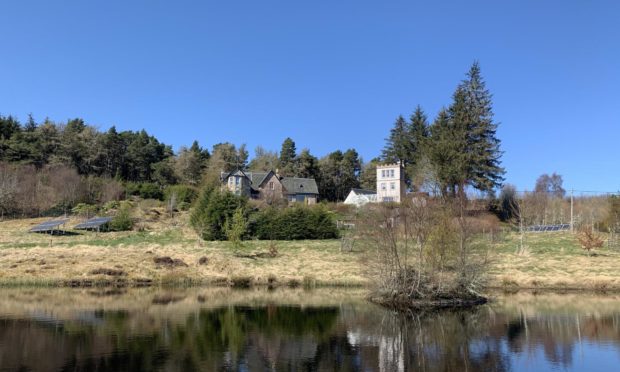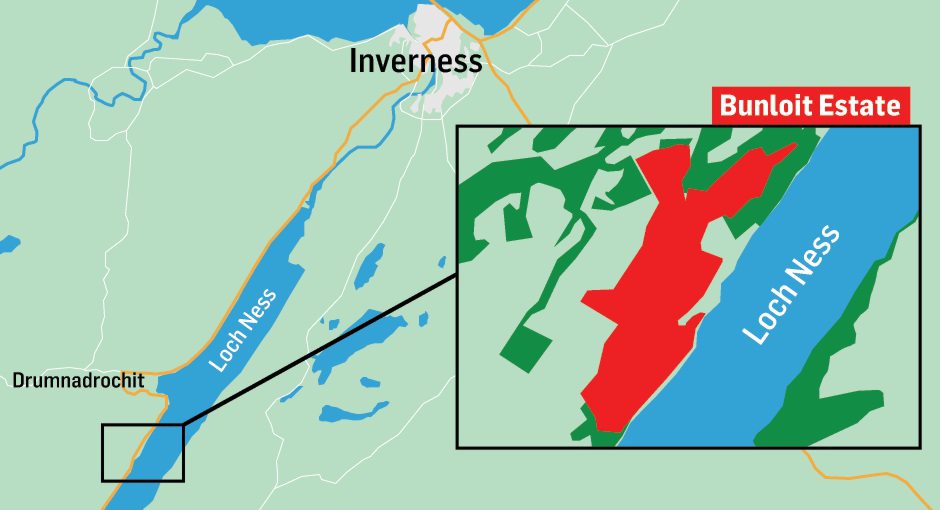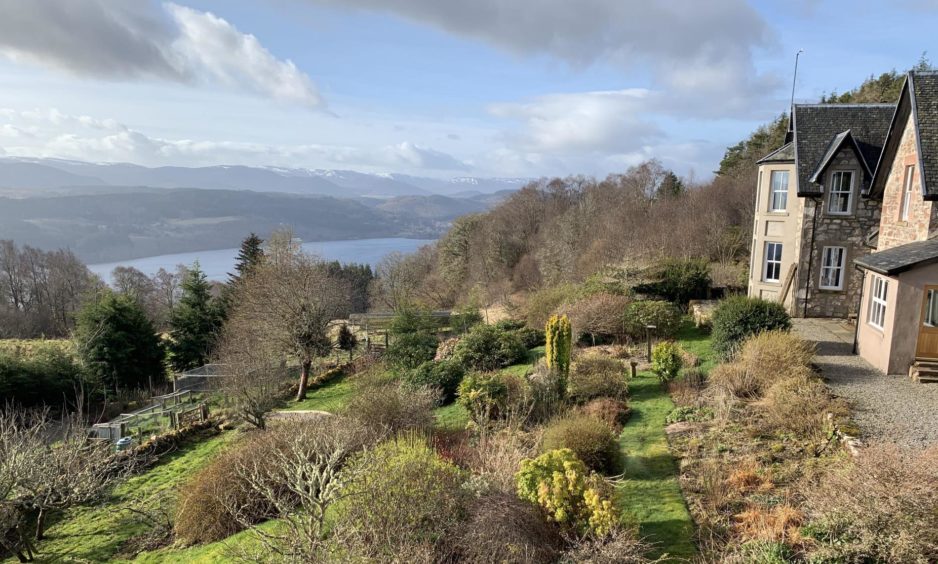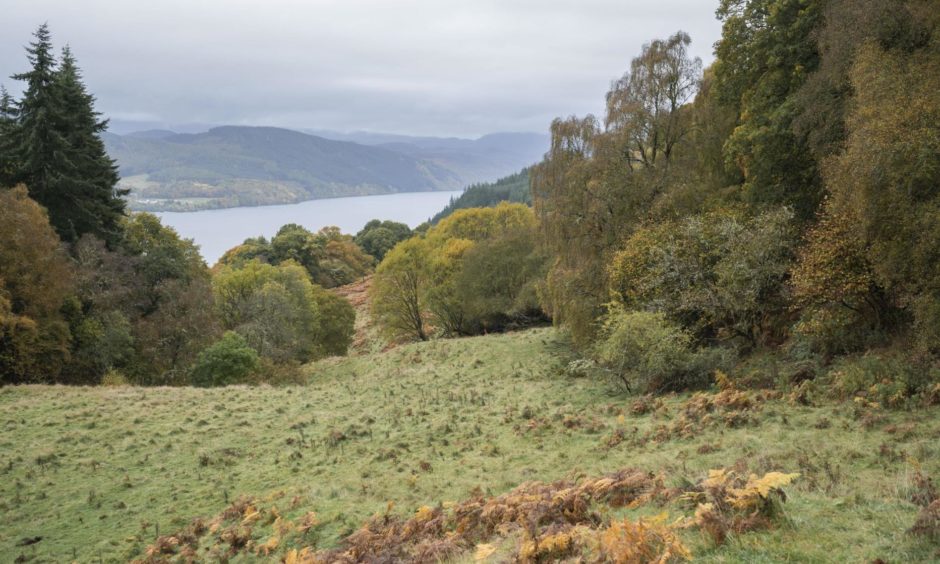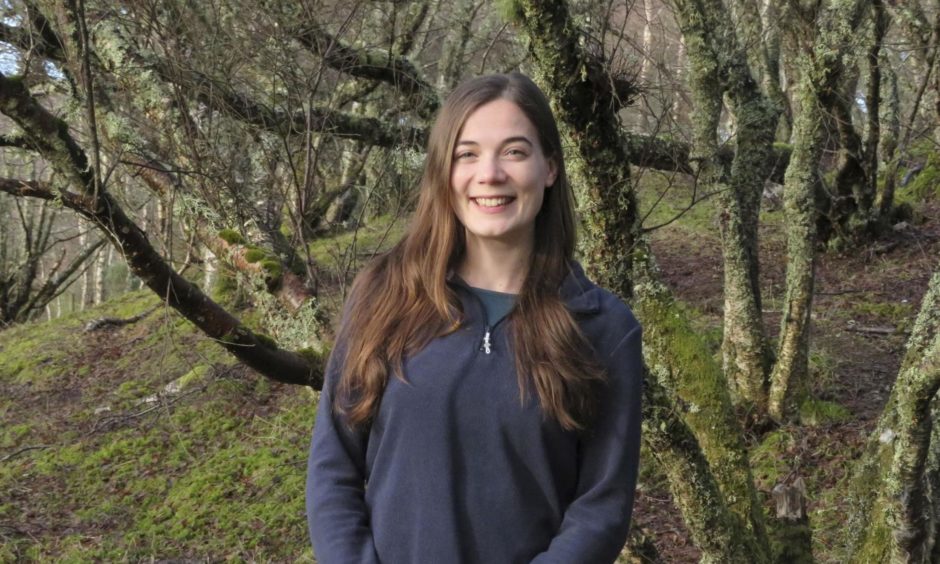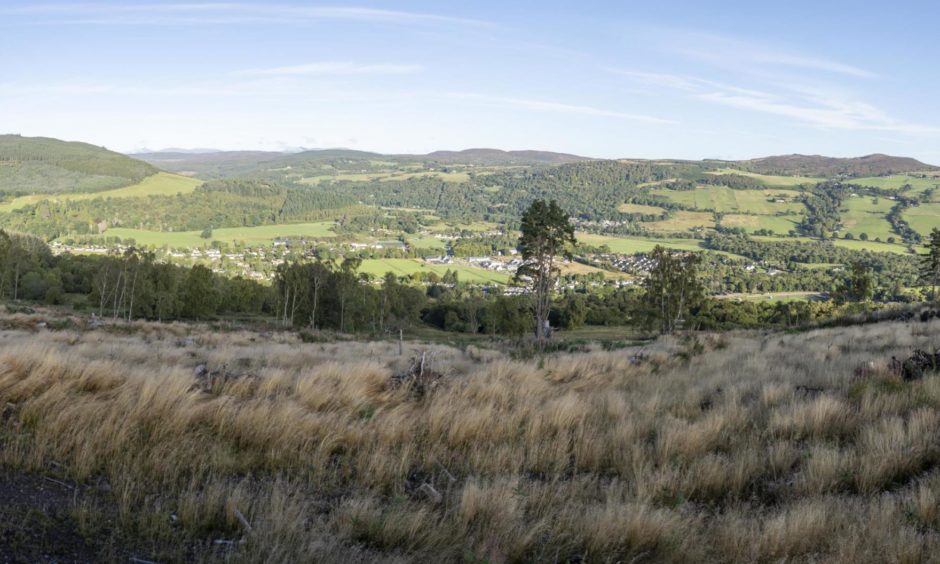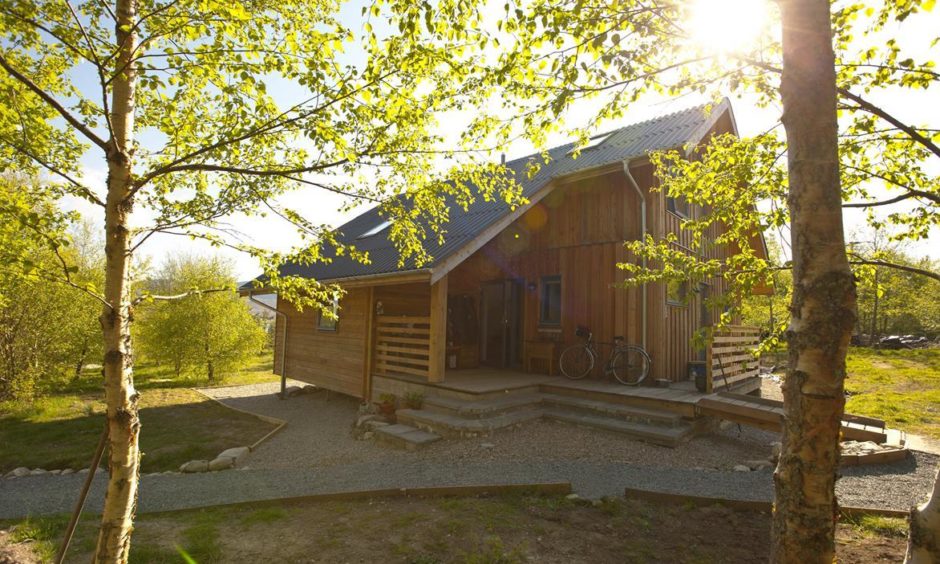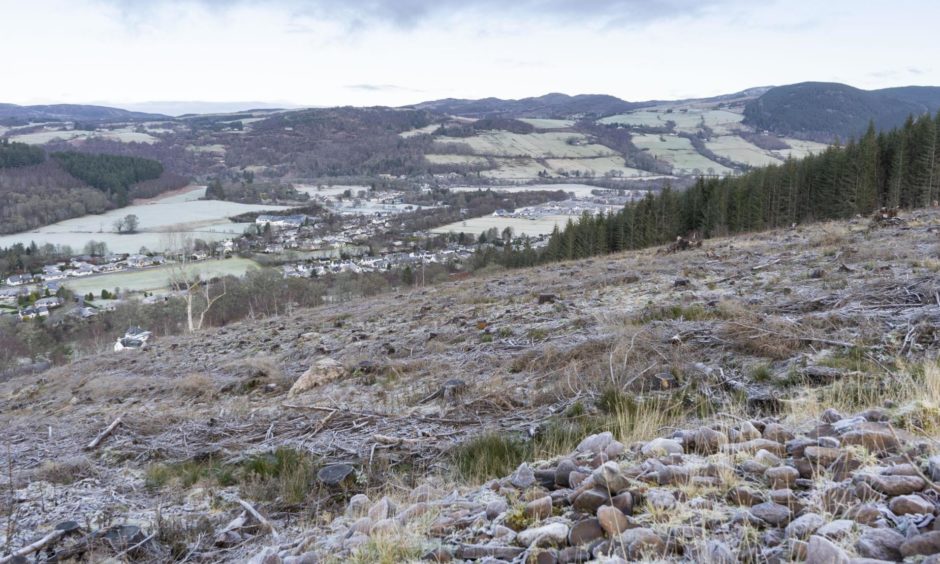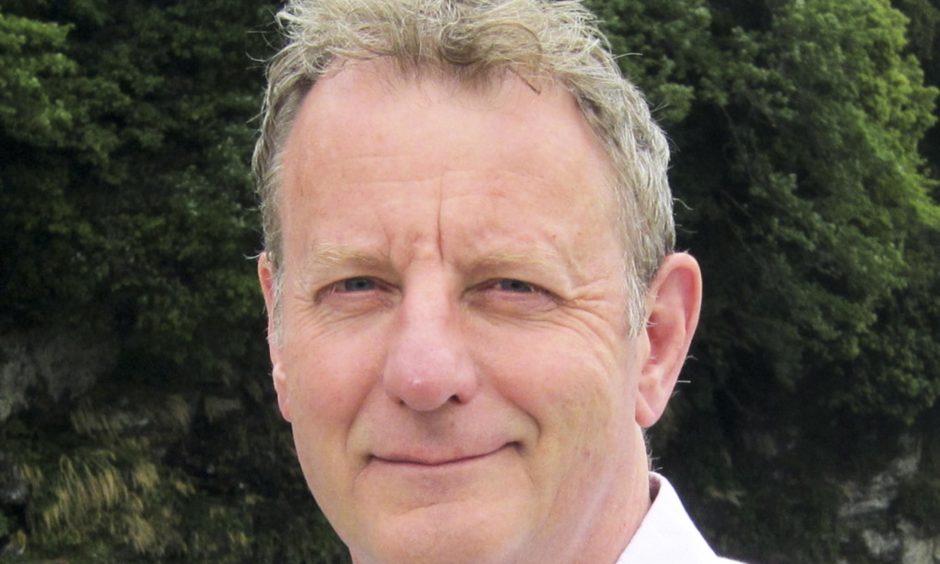The Old School House on the Bunloit Estate overlooking Loch Ness is a link to the area’s past and a reminder of a once much larger population.
There were 62 children in the school in 1883. But by 1943 the roll had declined and a further 13 years later it had closed as the community dwindled.
Within the next two years, however, more than 30 people could be living on the estate, doubling the current population.
At the same time, it is planned to build a new wood school, creating four jobs and 15 to 20 apprenticeships annually for local residents.
Repopulating the land is part of an ambitious plan by estate owner Jeremy Leggett to re-wild the estate, developing eco-friendly workshops and affordable homes while also creating new native woodlands and wildlife corridors and restoring peatlands.
The plan could see an electric shuttle bus ferrying workers and visitors to and from the estate and nearby villages. A planning application has also been submitted to convert agricultural buildings to accommodate public visitors and educational groups.
Wider objectives of the re-wilding vision include increasing carbon sequestration, encouraging native tree species in woodlands through natural regeneration and planting and using conservation grazing to increase pasture biodiversity.
People and nature co-existing
Mr Leggett, a solar energy entrepreneur and former scientific director at Greenpeace, has offered to donate 10% of annual profits to the community to help address the issue of land ownership inequality in Scotland.
He set up Bunloit Rewilding after buying the 1,262-acre estate near Drumnadrochit last year with the grand aims to fight the climate and biodiversity crises, the economic impacts of the pandemic and the Highland depopulation problem.
His vision is to create a model in land management, including the coexistence between people and nature, boosting biodiversity, carbon sequestration and job creation.
Local consultation is focusing on a woodland eco-building project to provide new jobs, trades and affordable housing.
Partnering with the Inverness-based ecological home building company Makar, Mr Leggatt intends to build zero carbon homes and eco-enterprise workshops in a regenerating woodland on a previously clear felled area, using timber from the estate.
Sixteen houses, half of them affordable homes, and seven workshops could be completed by the summer of 2023 if local support and planning permission is gained.
Kirsty Mackay, 25, a member of the Bunloit team, said it is hoped the project can tackle depopulation by providing opportunities for young people to stay in the Highlands.
“As I grew up in the Highlands, I’m excited by the potential of this project to give young people from the area a start in life.
“I believe boosting our land’s biodiversity and ability to mitigate against the climate crisis, while creating sustainable, green housing and economic opportunities is vital to the future of Highland communities.”
Wood school and apprentice scheme plan
The proposed businesses include a bespoke wooden furniture manufacturer which plans to start a furniture school with an apprenticeship training scheme.
Malcolm Mack runs Angus+Mack, a business specialising in the design and making of bespoke fitted interiors and feature staircases.
He has envisaged establishing a wood school in the Highlands for several years and believes there is a gap in opportunities available for people hoping to develop a career in woodworking.
A school at Bunloit would aim to create four jobs and recruit 15-20 students each year via a small workshop and design studio, with the option for students to live on site for an immersive creative experience and to reduce travel requirements.
Classes would be taught through a mixture of tutors and visiting industry professionals. It is also hoped to offer evening and weekend courses for people interested in woodworking as a pastime.
Students who hope to set up their own businesses will be offered a rented bench space for the year following their education to help them hone their skills.
Mr Mack said: “I am passionate about developing sustainable careers in the woodworking sector and have felt the challenges of finding enough suitably trained graduates, apprentices and cabinet makers for my business.
“The aim of the wood school is to equip students with the relevant skills necessary to start a successful woodworking career, whether as a self-employed maker, or through working in one of the many woodworking companies looking for skilled makers throughout Scotland.”
Mr Mack got in touch with Jeremy Leggett through a mutual contact.
He said: “The values that Bunloit stands for in terms of climate action and building back better fits very well with the wood school concept.
“A key pillar of the wood school will be to champion a green approach to the design, manufacture and consumption of timber products, while delivering a skills programme which will help towards rural economic recovery and growth.
“It’s really encouraging and exciting to discover a project like Bunloit that wants to support small rural businesses and encourage a more diverse and inclusive approach to land management.”
He added: “Overall, I feel that what Bunloit is trying to achieve is highly commendable. As the son of a tenant farmer I have some understanding of the challenges faced by those making a living from rented land and the inequality that the Scottish system of land ownership can sadly perpetuate.
“To find a landowner who is willing to do things differently – to promote a fairer, greener and more dynamic community and economy – is something I would like to support and contribute towards.
Community feedback
The response from the community has been mixed, with some welcoming the estate’s intentions and others voicing concerns about increased traffic, noise and light pollution as well as impact on water supplies.
Monique Riddle, who lives with husband Iain in one of the 25-30 houses near the estate, supports the rewilding plans, but said: “We are concerned that the estate intends to develop houses and workshops. To put more houses and especially workshops at Bunloit is not appropriate. It would double the population, if not more.”
She said the number of houses in the area has grown in recent years, along with holiday chalets, adding: “It’s a very steep, single track road, with sharp bends. More and more traffic is being put on the road which really can’t sustain it and it makes it dangerous for local to use.
“The road also forms part of the Great Glen Way and large number of visitors come to this area and are put on a road that is constantly seeing growth of traffic.”
Mrs Riddle added: “The crazy thing is, the reasons for putting additional houses on the estate is to invest in the local community and repeople the Highlands.
“Yet the area of development is, as the crow flies, half a mile from Drumnadrochit where there is the opportunity for the estate owner to invest in the community by building or assisting low cost houses in the village which is looking for investment.”
The estate believes the electric shuttle bus will help tackle traffic, while the design of the planned buildings will reduce noise and light pollution and alleviate other concerns about development in a remote and wild area.
Glen Urquhart Community Council will discuss the estate plans at a meeting on Monday.
Chairwoman Dianne Fraser said: “We are aware of the plans and we are looking to get community opinions at the meeting.”
Darroch Bratt, a PhD student based in Drumnadrochit, who has been carrying out research work at Bunloit, is broadly supportive of the proposals.
“I think it is refreshing to see an estate which is actually interested in making an area work for the community and the environment. That’s a rare thing in the Highlands.
“More diversity of employment would be a very good thing for this area, especially for young people who don’t have a huge number of options. As for affordable homes, they’re desperately needed. I haven’t been able to afford to rent or buy locally, despite always being in full-time employment, and I’ve had to stay with my fiancée’s family for two years now.
Housing which might give people an opportunity to live and work rurally would be a very welcome thing.
Darroch Bratt
“People are justifiably wary of property development in this area, there have been far too many housing developments which are completely unaffordable for first time buyers and many other local people.
“I think housing which might give people an opportunity to live and work rurally would be a very welcome thing.”
Biodiversity goals
Mr Leggett is working with Edinburgh University and the University of the Highlands and Islands on the estate’s biodiversity goals.
Roxane Andersen, professor of peatland science at the University of the Highlands and Islands, said: “We welcome working with businesses like Bunloit Estate as we are well placed to support initiatives which promote nature-based solutions, economic growth and prosperity through academic collaboration.”
She said research and teaching staff, and some students, have been developing links with Bunloit Estate on aspects of its plans, including peatland restoration and native woodland regeneration.
“Jeremy Leggett has been extremely positive about liaising with the University of the Highlands and Islands as their ‘local’ university and, although things have been somewhat limited due to Covid-19, there is certainly scope for continued engagement.”
Local ecologist Alison Strange said: “I am passionate about habitat restoration, high nature value farming and restoring people to where they used to live and Bunloit presented itself as a chance to do something fantastic.
“The estate, as I see it, has had minimum intervention for many years and so has developed acres of gorse on what were very biodiverse grasslands, that would have been cultivated in some form since the Pictish times.
“The heathland areas have also lost their mosaic and a large area of bog has been drained. There is a huge potential to restore the various habitats and increase the biodiversity whilst still producing food and providing some housing.”
Jeremy Leggett: My vision for Bunloit Estate
“Following a career as a climate campaigner and founder of the international solar company, Solarcentury, I am excited to be working on this new venture.
“My vision for Bunloit Estate is to become a model for a new way of land management that could bounce back from the climate and biodiversity crises, the economic impacts of the pandemic and the Highland depopulation problem. My hope is that this could lead to a better future for people, nature and ultimately the planet.
Through the Bunloit Rewilding Project, we will work on ecosystem restoration and regeneration to increase the estate’s capacity as a biodiverse carbon sink.
We believe that rewilding should not mean an absence of people but instead the coexistence of people and nature.
Jeremy Leggett
“We believe that rewilding should not mean an absence of people, but instead the coexistence of people and nature. Therefore, repeopling is also part of the model, to involve people in land where people used to be.
“By creating a natural circular economy, where people protect and enhance the land, we can in turn sustainably benefit from what nature has to offer. We hope to create new green jobs, trades and affordable housing within our rewilding project to demonstrate a viable way forward where local communities and economies thrive whilst working towards a safer future in the face of the existential threat of climate change.
Consultation with the community and experts
“Furthermore, addressing the inequalities of land ownership in Scotland is on the agenda. 10% of annual net profits will be donated to the Glen Urquhart community.
“Our goals are to measurably increase carbon sequestration and biodiversity, create nature-based employment and to make sustainable and ethical profits to reinvest back into the project.
“We are coming to the end of our year of conferring with a wide range of experts, relevant organisations and the local community.
“This valuable bank of knowledge and advice has allowed us to begin making decisions regarding our peatland, woodland and pasture restoration and regeneration work. We are currently in the mass outreach phase of our community consultation which focusses on our woodland eco-building ideas.”
